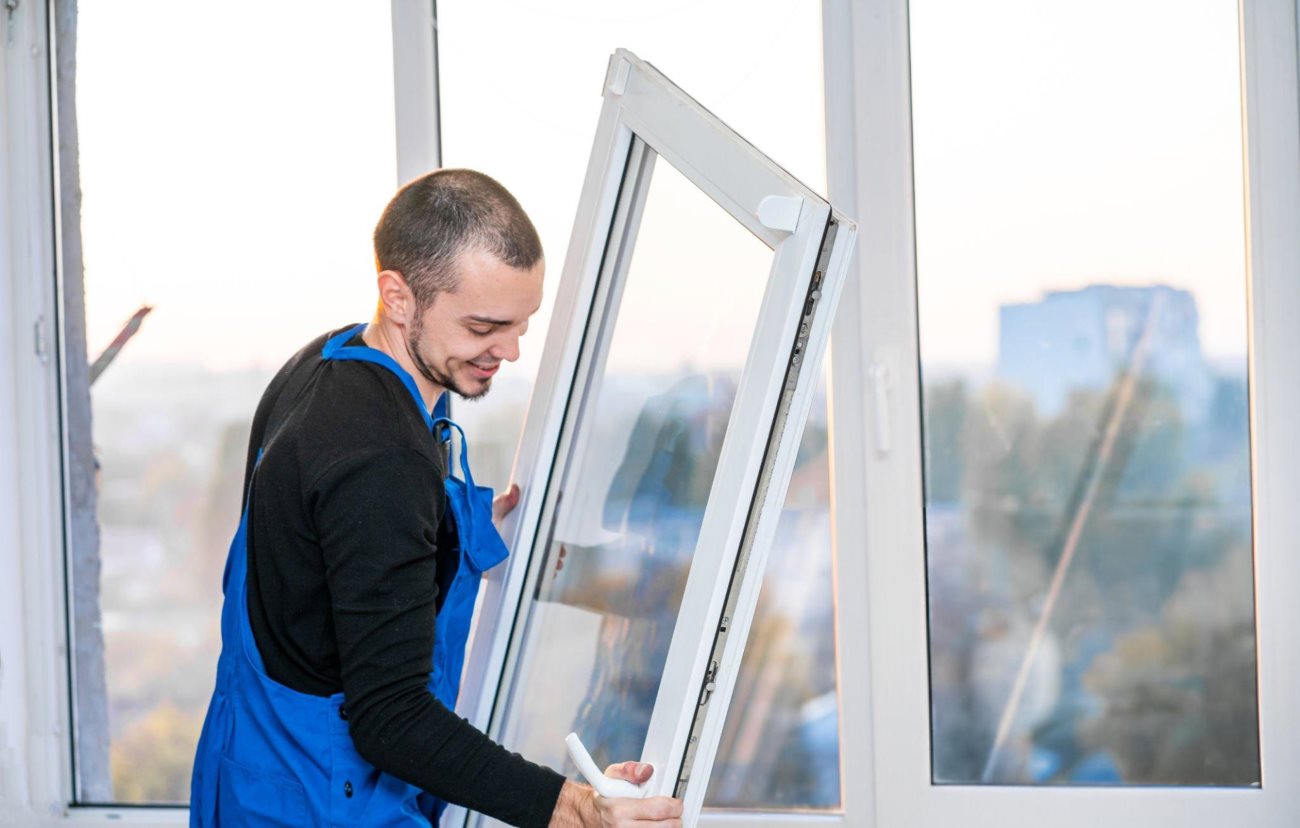
What to Know About Window Replacement
Window replacement is a significant home improvement project that can enhance the appearance, energy efficiency, and value of a property. Homeowners often consider this upgrade when their existing windows show signs of wear, damage, or poor performance. What to know about window replacement involves understanding the various aspects of this process, from selecting materials to evaluating costs.
This article will explore key areas to help homeowners make informed decisions about window replacement. It will also discuss the importance of professional installation and long-term maintenance to ensure optimal performance and longevity of new windows.
Energy Efficiency Benefits of New Windows
New windows can have a significant impact on a home’s energy efficiency. They play a crucial role in reducing heating and cooling costs, improving insulation, and enhancing overall comfort. Understanding the benefits of energy-efficient windows can help homeowners make informed decisions when considering window replacement.
Lower heating and cooling costs
Energy-efficient windows can lead to substantial savings on energy bills. According to Energy Star, replacing old windows with Energy Star-certified products can lower household energy bills by up to 13%. This reduction is due to the improved insulation properties of modern windows, which help maintain a consistent indoor temperature.
As a result, heating and cooling systems don’t have to work as hard, leading to lower energy consumption and reduced costs.
Improved insulation and comfort
New windows offer better insulation, keeping homes warmer in winter and cooler in summer. They use advanced materials and designs to minimize heat transfer between the interior and exterior of a home. This improved insulation leads to more stable indoor temperatures and increased comfort for occupants.
Additionally, energy-efficient windows can reduce condensation, which often forms on poorly insulated windows during cold weather.
Energy Star ratings explained
Energy Star is a program run by the U.S. Environmental Protection Agency (EPA) and the U.S. Department of Energy. It assesses products’ energy efficiency using standardized methods. Windows with the Energy Star label meet specific criteria:
- They are manufactured by an Energy Star partner.
- They are independently tested, certified, and verified by the National Fenestration Rating Council (NFRC).
- They meet strict guidelines set by the EPA.
Energy Star evaluates a window’s framing materials, panes, glass type, and spacers to determine its energy performance. The ratings help homeowners identify the most energy-efficient products for their specific climate zone, ensuring optimal performance and energy savings.
Choosing the Right Window Materials
When considering window replacement, selecting the right materials is crucial for durability, energy efficiency, and overall performance. Homeowners have several options to choose from, each with its own set of advantages and disadvantages.
Vinyl vs. fiberglass vs. wood options
Vinyl windows are a popular choice due to their affordability and low maintenance requirements. They offer good insulation properties and come in various colors and styles. Fiberglass windows, on the other hand, are known for their exceptional strength and durability.
They are eight times stronger than vinyl and resist expanding and contracting in different climates. Wood windows provide a classic, timeless look and excellent insulation but require more maintenance compared to other materials.
Pros and cons of each material
Vinyl windows are cost-effective and energy-efficient but may not be suitable for all climates. Fiberglass windows offer superior strength and thermal performance but come at a higher price point. Wood windows provide natural beauty and customization options but need regular upkeep to prevent rot and moisture damage.
Best materials for different climates
In regions with extreme temperature fluctuations, fiberglass windows are an excellent choice due to their stability and resistance to warping. For coastal areas prone to hurricanes, impact-resistant windows made of vinyl or fiberglass are recommended. In moderate climates, any of these materials can work well, with the choice depending on personal preferences and budget constraints.
Understanding Window Styles and Features
Window replacement offers homeowners a variety of styles and features to choose from. Each type has its own advantages and considerations, making it essential to understand the options available.
Double-hung vs. casement vs. sliding windows
Double-hung windows are a popular choice, featuring two movable sashes that slide vertically. They provide excellent ventilation and are easy to clean. Casement windows, on the other hand, are hinged on one side and open outward using a crank mechanism.
They offer superior ventilation and energy efficiency due to their tight seal when closed. Sliding windows operate horizontally, making them ideal for spaces where vertical operation might be impractical.
Low-E glass and gas fills
Low-E (low-emissivity) glass has a microscopically thin coating that reflects infrared energy, improving a window’s insulating properties. This technology helps maintain indoor temperatures by reflecting heat back inside during winter and keeping it out during summer.
Gas fills, such as argon or krypton, are often used between glass panes to enhance thermal performance. These inert gasses are denser than air, reducing heat transfer and improving overall energy efficiency.
Security and safety features
Modern windows incorporate various security and safety features to protect homeowners. Multi-point locking systems secure the window at multiple points along the frame, making forced entry more difficult. Reinforced glass options, such as tempered or laminated glass, offer increased resistance to breaking.
Some windows also integrate alarm systems that detect unauthorized opening or breaking, alerting homeowners to potential security breaches. Additionally, egress windows provide a safe escape route during emergencies, meeting building code requirements for safety.
Cost Considerations for Window Replacement
Average costs per window
The cost of window replacement can vary significantly, with typical prices ranging from USD 300.00 to USD 1200.00 per window. On average, homeowners can expect to pay around USD 850.00 per window. However, these costs can fluctuate based on various factors, including the window’s material, style, and size.
For instance, vinyl windows are generally more affordable, while wood windows tend to be pricier. Fiberglass windows often fall in the middle range but offer excellent durability and energy efficiency.
Factors affecting total project cost
Several elements influence the overall cost of a window replacement project. The number of windows being replaced is a primary factor, as replacing multiple windows at once can lead to potential bulk discounts. The type of installation also plays a role, with full-frame installations typically costing 15% to 20% more than retrofit options.
Geographic location can impact costs due to variations in labor rates and building codes. For example, coastal areas may require impact-resistant windows to withstand hurricanes, which can increase expenses. Additionally, energy-efficient features like low-E glass and gas fills can add to the initial cost but offer long-term savings on energy bills.
Potential ROI and home value increase
While window replacement is a significant investment, it can provide a substantial return on investment (ROI). According to industry reports, homeowners can expect to recoup about 69% to 80% of the project cost through increased home value. This translates to an average value addition of USD 13766.00 for vinyl window replacements and USD 14912.00 for wood window replacements.
Moreover, new windows can enhance a home’s energy efficiency, potentially leading to lower utility bills and increased comfort. They also improve curb appeal, which can be particularly beneficial when selling a property.
Window replacement is an investment that can pay off in multiple ways. It not only enhances the look and feel of a home but also contributes to energy savings and increased property value. While the upfront costs may be substantial, the long-term benefits often justify the expense. Working with reputable professionals and quality products ensures a successful window replacement that enhances long-term comfort.
FAQs
What to Expect When Having Windows Replaced?
When having windows replaced, expect a process that includes removing the old windows, prepping the openings, and installing new ones. The installation team will typically take care of cleanup, but there may be some noise and dust. Depending on the number of windows, the job can take a few hours to a couple of days.
How Can You Tell If a Window is Good Quality?
Good quality windows are made from durable materials, have energy-efficient glass, and feature a strong, well-insulated frame. Look for windows with energy ratings, double or triple glazing, and solid warranties. Checking for certifications like ENERGY STAR can also indicate higher quality.
How to Prepare for Window Replacement?
To prepare for window replacement, clear the area around the windows, including removing furniture, curtains, and blinds. Make sure there is easy access to the windows and cover nearby items to protect them from dust. You may also want to inform your neighbors about the work.
What Does Window Replacement Include?
Window replacement typically includes removing the old window, disposing of it, prepping the window opening, and installing the new window with proper sealing. It may also involve adjusting the frame, adding insulation, and cleaning up the work area afterward.
How Messy Is Window Replacement?
Window replacement can be somewhat messy, as it involves removing old frames and dealing with dust and debris. However, professional installers usually minimize the mess by using drop cloths, sealing off work areas, and cleaning up once the job is complete.
How to Measure a Window for Replacement?
To measure a window for replacement, measure the width and height at three different points (top, middle, and bottom for width; left, middle, and right for height). Use the smallest measurement for each dimension to ensure a proper fit. Make sure to measure from the inside of the frame.


